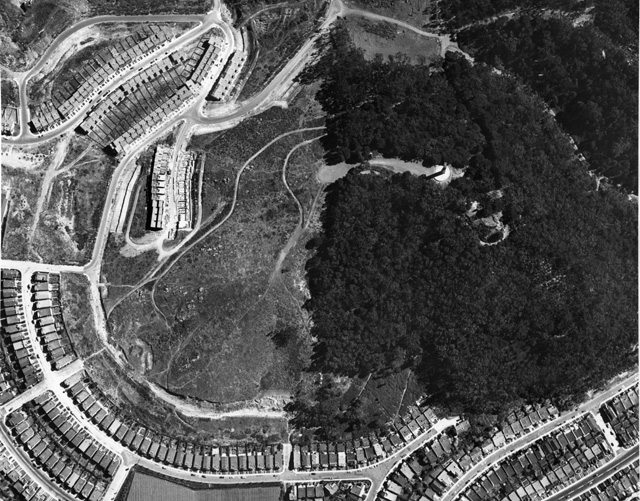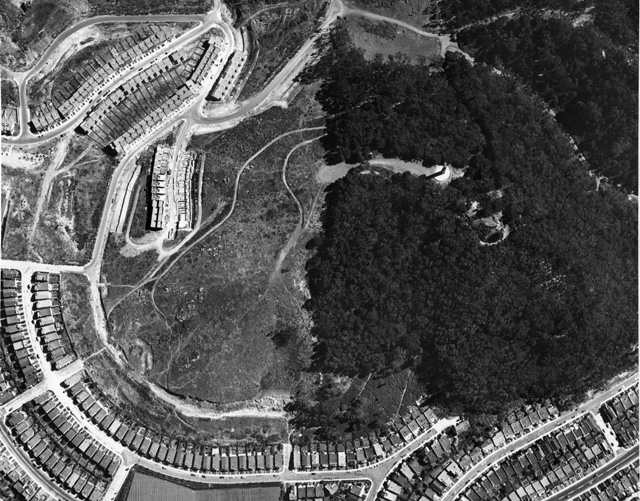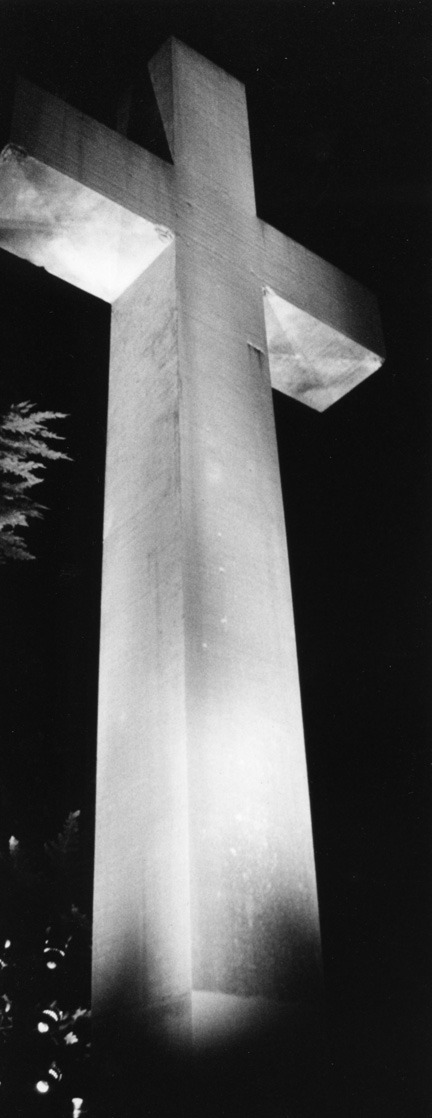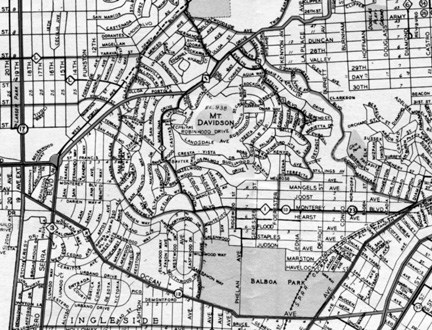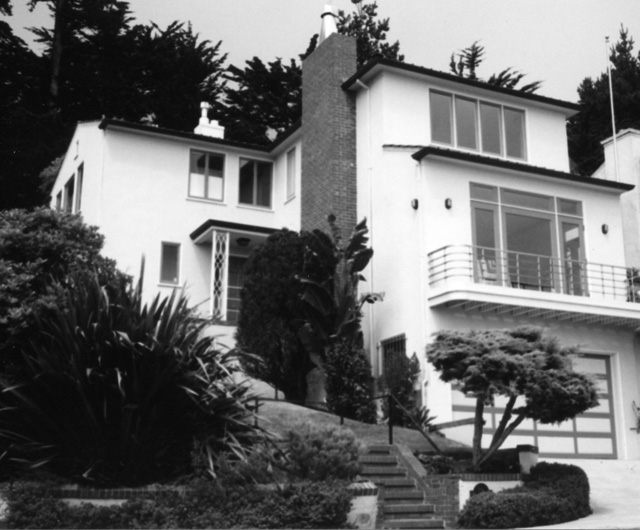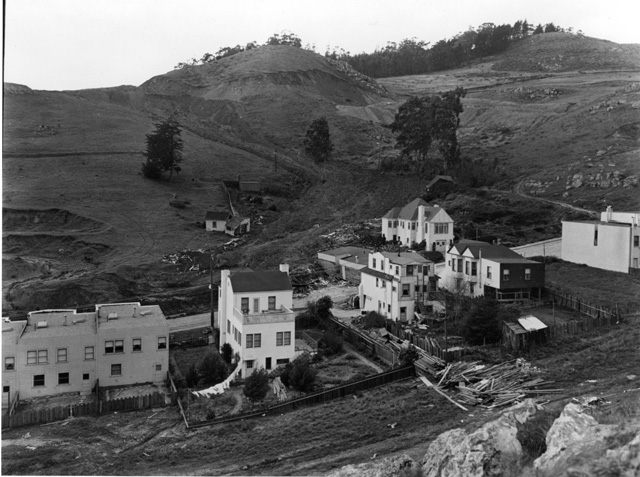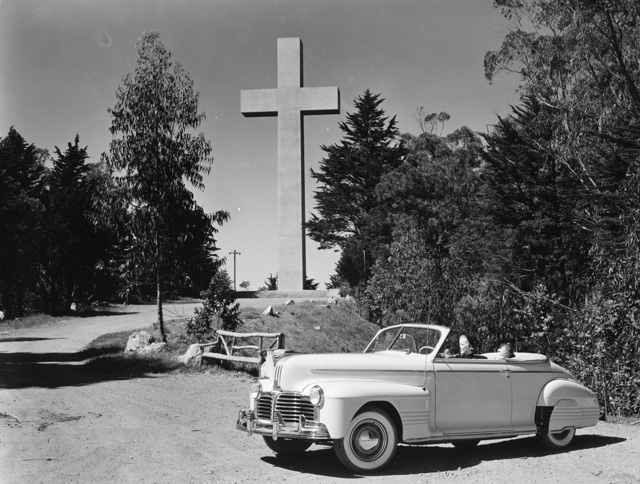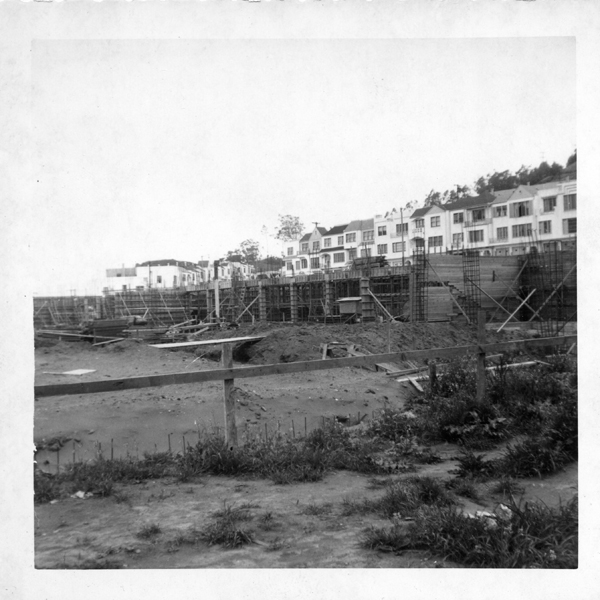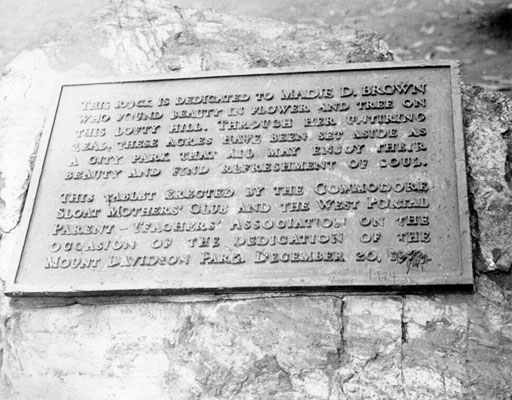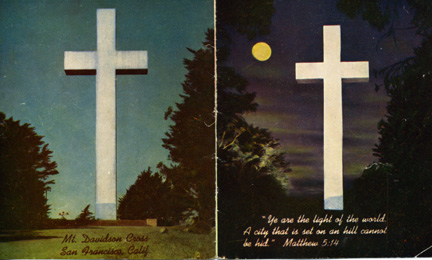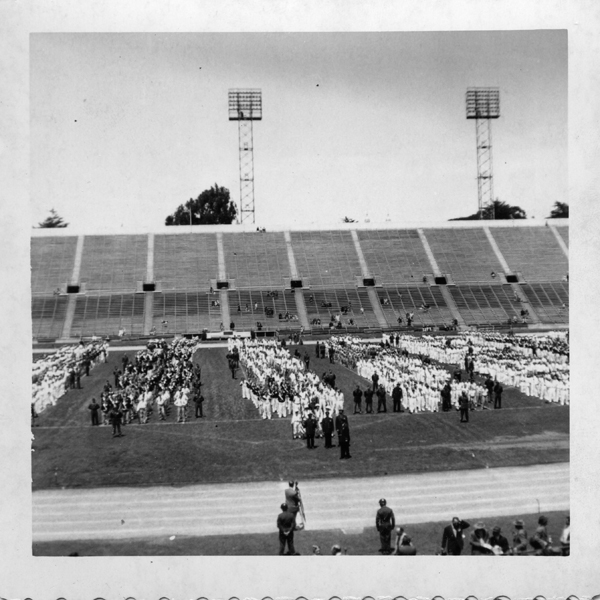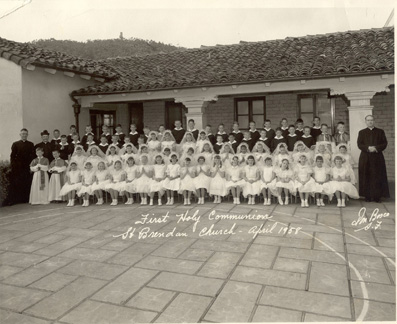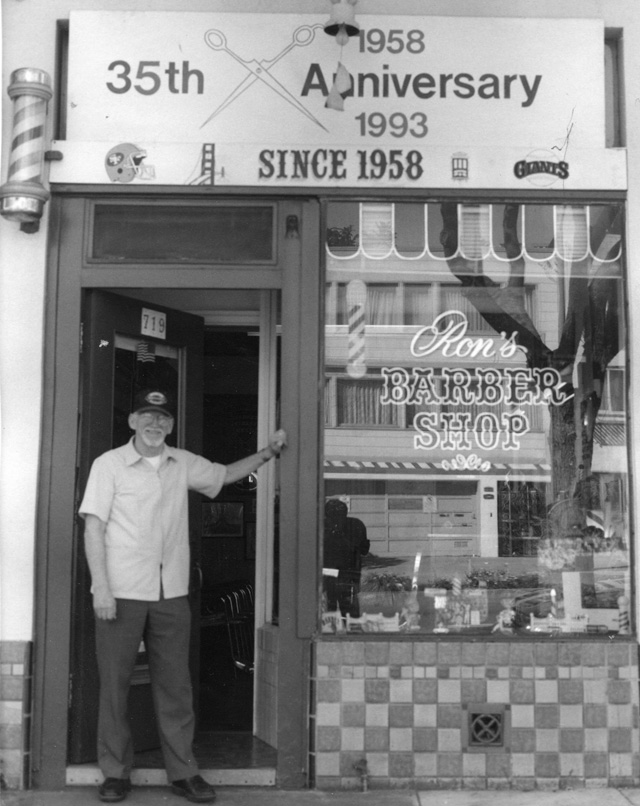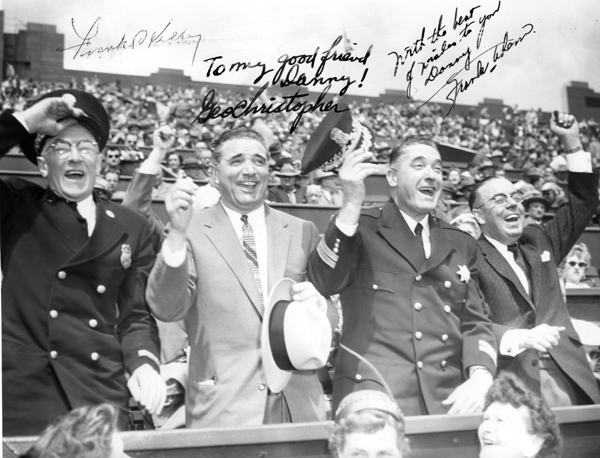World War II and Postwar Growth – Living the American Dream
World War II, writes historian Tom Cole, “Threw the city into forty-six months of frenetic wartime activity that altered it in unexpected ways. As America’s major Pacific port, San Francisco was nearly overwhelmed by the needs of the country’s war machine. Historian Oscar Lewis has written, ‘World War II had as great an impact on the city’s economy as any event since the Gold Rush almost a century earlier.’ Over a million and a half military personnel and twenty-three million tons of war supplies passed through the Golden Gate during the war. The already densely populated city was filled almost to bursting. The number of factories in the city increased by a third, and the industrial workforce more than doubled in size.” The largest crowd ever, over 75,000 attended the Easter sunrise services on Mount Davidson. World War II and its resulting baby boom led to a major expansion of housing and commercial businesses west of Twin Peaks. This 1948 aerial view of the Mount Davidson Cross (below), shows the home building continued up the hill despite the efforts of the Miraloma Park Improvement Club to add more acreage to the park. Funds were raised for year-round lighting of the twelve 1000 watt bulbs illuminating the cross in 1955 after a soldier bound for Korea wrote that the lit cross was his last sight of home.
A 1940 map of the West of Twin Peaks District (above) shows a dotted line for the new major arterial under construction across the east side of Mount Davidson, named for Hetch Hetchy System engineer, O’Shaughnessy Boulevard; the Sunnyside Line 10 streetcar on Monterey Boulevard which will be discontinued in 1942; the Southern Pacific Railroad line before it is replaced by the 280 Freeway; and a yet-to-be constructed City College at Balboa Park.
Mark Pommon opens Tower Market on Portola Drive in 1942. Rosalie Kuwatch writes, “During the war years, as imported food items such as coffee and sugar became scarce there was panic buying. Some farmers were required to grow only certain crops in order to feed the army. To prevent hoarding, the government issued books of ration stamps to families, which was a headache for grocers. Mark Pommon not only felt he had to apologize to each customer for the lack of certain items, but had to fill in forms with hundreds of their ration stamps to present to wholesalers in order to replenish his stock.” (Courtesy of John Pommon.)
KGO Radio “Dream House,” (above) built at One Cresta Vista Drive for the well-known Edwards family radio show in 1941 by Baldwin and Howell to publicize their Sherwood Forest subdivision. While the fictional family discussed their design and wishes on the air, the home was actually being built on the highest and last major subdivision of Mount Davidson. After its completion in 1941, thousands flocked to tours of this dream home every Sunday. The home was last open to the public on the day of Pearl Harbor’s bombing. (Courtesy Michael DeLiso.)
After Madie Brown, the next major impediment to Mount Davidson’s development came from the mountain itself. On February 6, 1942, after a rainy winter during which construction crews busily cut news roads on Mount Davidson’s southeastern slope, the entire hillside gave way and crashed down on the homes below. A river of mud one-half mile long and ten to twenty feet deep trapped many residents in their homes and killed Mrs. Dora Kammer. The 700 block of Foerster Street was buried in mud.
Attendance at the sunrise event reached its highest peak during World War II. “Here is part of the throng of 75,000 that turned out for sunrise services on Easter morning. Men, women, and children toiled up the slopes of the mountain in the early dawn to participate in this annual service, nineteenth of its kind here.” The postwar development of California’s car culture is heralded from San Francisco’s highest point on this sunny post World War II day in a new chrome-covered, deluxe Pontiac convertible.
Construction of new Miraloma Elementary School in 1951 at 175 Omar Way after parents, led by Dale Jones, petition for it. The contractor was Munson Brothers who built the Mount Davidson Cross in 1934. Postwar homes in background are taller, no longer detached, and prominently feature two car garages in front instead of a yard.(Courtesy Bertha Jones.)
This aerial view in 1951 shows a now-completed section of the “suburb in the city” along Arroyo Way in Miraloma Park. The church under construction was deliberately built tall so it could be seen from all around. Moving to the neighborhood with her husband in 1945, Velma Salcido, calls it “the friendly church at the foot of the cross.” (Courtesy Miraloma Community Church.)
Aptos Middle School orchestra and band in 1952. (Courtesy Jeanne Davis MacKenzie.)
The plaque dedicated to Madie Brown for her efforts to save Mount Davidson as a public park in 1929 is replaced in 1955 by the Commodore Sloat and West Portal Parent Teacher Associations. (Courtesy www.outsidelands.org.)
The second plaque has also since been removed from the rock dedicated to Madie Brown on Mount Davidson at the top of the trail to Inspiration Point.
The cross is featured in this brochure for the signing of the United Nations Charter in San Francisco in 1955.
Gathering below of the public school student traffic officers at Kezar Stadium in 1951. (Courtesy Bertha Jones.)
First Communion 1958 at St. Brendan’s Grammar School, which was constructed in 1947. (Courtesy Dave Bisho.)
Future West of Twin Peaks Central Council Presidents: Joseph R. Bisho Jr., President in 1981 and his son, Dave, who serves as President from 1994 to 1996 and 2004 to present, standing in front of their Sunset District home on 35th Ave between Vicente and Wawona before moving to St. Francis Woods in 1952. Fourth generation San Franciscan, Dave Bisho, graduates from St. Brendan’s and raises his children in the Westwood Highlands neighborhood on Mount Davidson. (Courtesy Dave Bisho.)
Ron Davis opens Ron’s Barbershop on Monterey Boulevard near his home in Sunnyside in 1958. (Courtesy Ron Davis.)
Tower Market owner, Dan Pommon, with Mayor Christopher, Police Chief Frank Ahern, and Fire Chief Frank Kelly, Giant’s Opening Day at Seals Stadium (built by Henry J. Brunnier.) The Pommons and Christophers formed friendships attending the same Greek church. George Christopher was in the dairy business and Tower Market sold Christopher Dairy Milk. Mayor Christopher brought the Giants baseball team to San Francisco in 1958 and initiated the building of Candlestick Park for them in 1960.
Next: Chapter 6 A City for All

